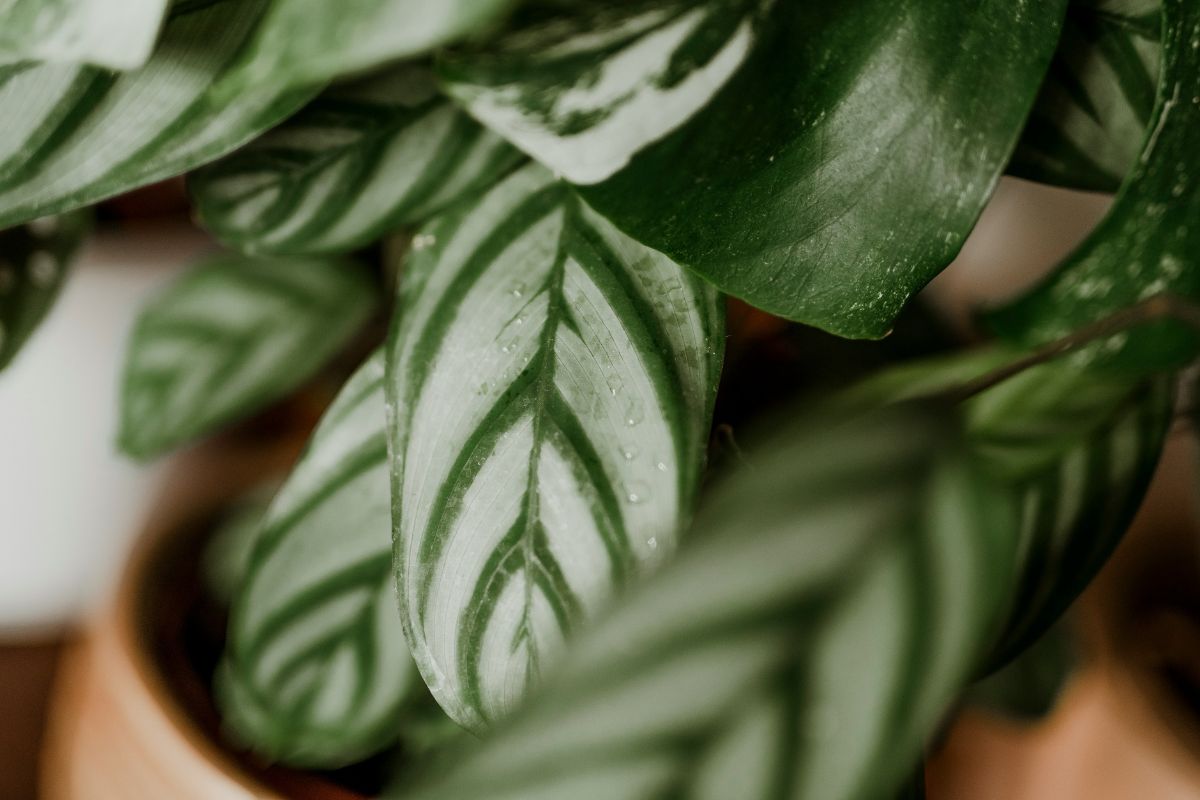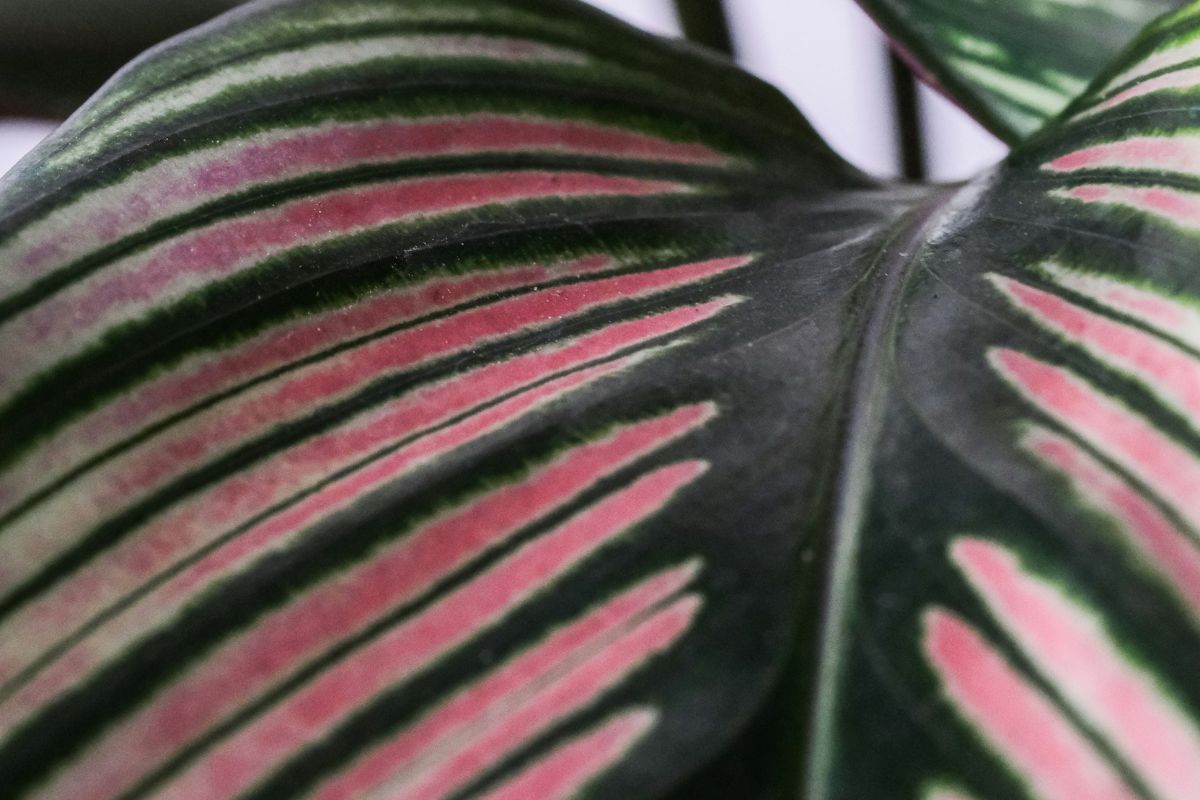Calathea Plant A Perfect Blend of Beauty and Benefits
The Calathea plant, often referred to as the “prayer plant,” is a stunning indoor plant known for its striking foliage. With intricate patterns and vibrant colors ranging from deep greens to purples, Calathea makes an eye-catching addition to any home. Native to the tropical regions of South America, this plant is cherished not only for its aesthetic appeal but also for its unique movements and ability to thrive in indoor environments.
Benefits of the Calathea Plant

1. Aesthetic Elegance
The Calathea plant is famous for its decorative leaves, which feature bold stripes, intricate designs, and contrasting colors. Its beauty makes it a perfect choice for enhancing the decor of any space. Whether placed in a modern living room or a minimalist office, the plant adds a touch of sophistication and vibrancy.
Design Tip:
Choose decorative pots that complement the colors of your Calathea to create a cohesive look.
2. Air Purification
Like many indoor plants, Calathea improves indoor air quality by filtering toxins and releasing oxygen. This creates a healthier environment and contributes to overall well-being.
Why It Matters:
Cleaner air reduces the risk of respiratory issues and promotes a refreshing living or working space.
3. Promotes Humidity
The Calathea plant enhances indoor humidity by releasing moisture through transpiration, contributing to a balanced and comfortable environment. This can be particularly beneficial in homes with dry air, especially during winter months when heating systems lower humidity.
Benefits of Balanced Humidity:
Prevents dry skin and respiratory discomfort.
Keeps other indoor plants healthy by maintaining a humid microclimate.
4. Stress Reduction
Caring for a Calathea plant can help reduce stress and improve mental well-being. The act of nurturing a plant fosters a sense of accomplishment and mindfulness, while its vibrant greenery brings a calming, natural vibe to indoor spaces.

How to Care for Your Calathea Plant
Although Calathea plants are admired for their beauty, they require specific care to thrive. Here’s a guide to keeping your Calathea healthy and happy:
1. Light Requirements
Calathea prefers bright, indirect light. Direct sunlight can scorch its leaves and cause fading of its vibrant patterns. It also tolerates low-light conditions, making it suitable for shaded corners of your home.
Tip:
Place your Calathea near a window with filtered light, such as one covered by sheer curtains.
2. Watering
Calatheas love consistently moist soil but are sensitive to overwatering. Using distilled or rainwater is ideal, as they are sensitive to fluoride and chlorine often found in tap water.
How to Water:
Check the top inch of soil, and water only if it feels dry to the touch.
Ensure proper drainage to prevent waterlogging.
3. Humidity
High humidity is crucial for the Calathea plant to thrive. If the air in your home is dry, you may notice browning edges on the leaves.
Ways to Maintain Humidity:
Use a humidifier near the plant.
Mist the leaves regularly or use a pebble tray with water nearby to increase humidity.
Group your Calathea with other plants to create a humid microenvironment.
4. Temperature
Calathea prefers warm, stable temperatures between 65°F and 80°F (18°C to 27°C). Avoid exposing it to drafts, cold air, or sudden temperature changes, as this can stress the plant.
5. Soil
The plant thrives in well-draining, nutrient-rich soil. Use a soil mix designed for tropical plants or combine peat, perlite, and potting soil for optimal growth.
6. Pruning and Cleaning
Trim yellow or damaged leaves to promote healthy growth and keep the plant looking its best. Clean the leaves regularly to remove dust and ensure efficient photosynthesis.
Tip:
Use a damp cloth to gently wipe the leaves and restore their natural shine.
Unique Feature: Leaf Movement
One of the most fascinating aspects of the Calathea plant is its movement. Known as “nyctinasty,” its leaves close upward at night and reopen during the day. This unique trait adds an interactive and dynamic quality to the plant, making it a delightful addition to any indoor space.
Common Problems and Solutions
Brown Leaf Edges: Often caused by low humidity or tap water with chemicals. Increase humidity and switch to distilled water.
Yellow Leaves: May indicate overwatering or poor drainage. Let the soil dry out slightly before watering again to avoid overwatering.
Faded Patterns: Usually due to too much direct sunlight. Relocate the plant to an area with bright, indirect light for optimal growth.
Conclusion
The Calathea plant is a perfect choice for those looking to combine natural beauty with practical benefits. Its air-purifying abilities, stress-reducing presence, and humidity-enhancing properties make it an excellent addition to any home or office. With proper care, this tropical beauty will reward you with vibrant foliage and its signature leaf movements, adding a touch of wonder to your indoor garden.

